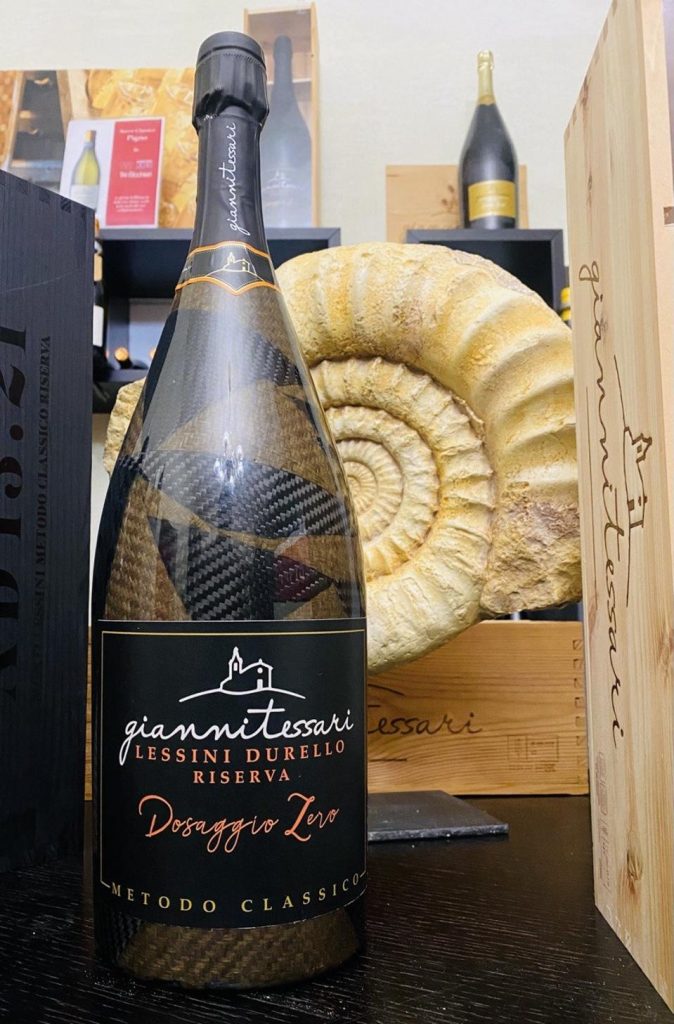A Surprising, Versatile Material
Everything begun in 2015 with a humble water bottle: this was the very first handmade item by Enrico Raimondo, a mechanical designer, inventor and artisan from Veneto. The material though was one-of-a-kind: his inventor called it Raimante, crasis between the inventor’s surname and the Italian word “diamante” (diamond). It’s a brand-new material that was born from the sustainable reuse of composite fiber scrap from in-mold lamination, plotter cutting, impregnation, and so on. The outcome of a special patented process (one of the current 10 patents owned by Raimondo) turns the scraps of carbon, linen, glass, or Kevlar fibers into a new material; a composite which folds and molds like fabric. This way, it can be used in endless ways to create the most diverse objects. It’s extremely light and overall eco-friendly: the environmental impact to get the Raimante is close to zero. “I use these scraps in real time, when I receive them by the companies that want it to dispose of them –explains Enrico Raimondo– I do not chemically or physically alter them, and work them with my hands. The only operations that emit CO2 are the transport of offcuts from companies to my laboratory, and the storage of rolls in a cold room. The rest of the procedure is completely manual.”
Although carbon fiber is not new, the way it is reused is.
To date, carbon fiber was familiar mainly to sports people. Indeed, for years it has been used both to make racing bicycles and parts for racing cars, such as the body. But nobody has ever made small objects, such as a water bottle, a glass, or a plate.”
Combo, A Wine Bottle Unique To The World
In 2017, after obtaining an international patent for composite fibers certified for food contact, he created “Combo”, the first carbon fiber wine bottle. This special bottle combines two significant qualities: lightness (a Jeroboam, or 3-liter bottle, weighs only 400 gr.) and strength (fiberglass is virtually unbreakable). These carbon-fiber bottles might solve the issues of bottle weight, which affects the cost of transportation, and accidental bottle breakage during transportation: two deeply felt issues by those in the industry. Regrettably, those kinds of wine bottles are currently costly. Raimondo produces only Jeroboam bottles, and even empty each of them costs nearly $800. “ This is because these pieces are made entirely by hand, one by one –the inventor says–The inner lining alone takes 72 hours to dry, and this step can only be done in the air.” Despite the production costs of his products, though, over the years he ended up meeting a wine producer who shared his philosophy of working for a more sustainable world: Gianni Tessari, a renowned producer of still and sparkling wines in Montecchia di Crosara (Verona, Italy).
Three years ago, the two entrepreneurs began a collaboration that lasts to this day. For Giannitessari winery, Raimondo has made – and still makes – a series of carbon, kevlar, and linen fiber bottles, each one being handcrafted and customized one by one. For his part, Gianni Tessari is the first producer in the Verona province who decided to bottle some of his most important wines, as the sparkling wine classic method “Lessini Durello Extra Brut 60 Months”, in very few magnums. Today, Enrico Raimondo is committed to many different projects, that range from the fashion sector (sports bags, shoes, belts, document holders) to kitchen utensils (plates, trays, glass), to the racing world (he is a Lamborghini official supplier, and collaborates also with the Ferrari racing stable), to the design for household furniture. And on and on.
“My aim has always been to create a better world for our children and for all of us –he concludes– Eventually I can say that this philosophy of sustainability begins to be understood and shared by more and more people, even taking the most unexpected directions.”
Elisabetta Tosi

